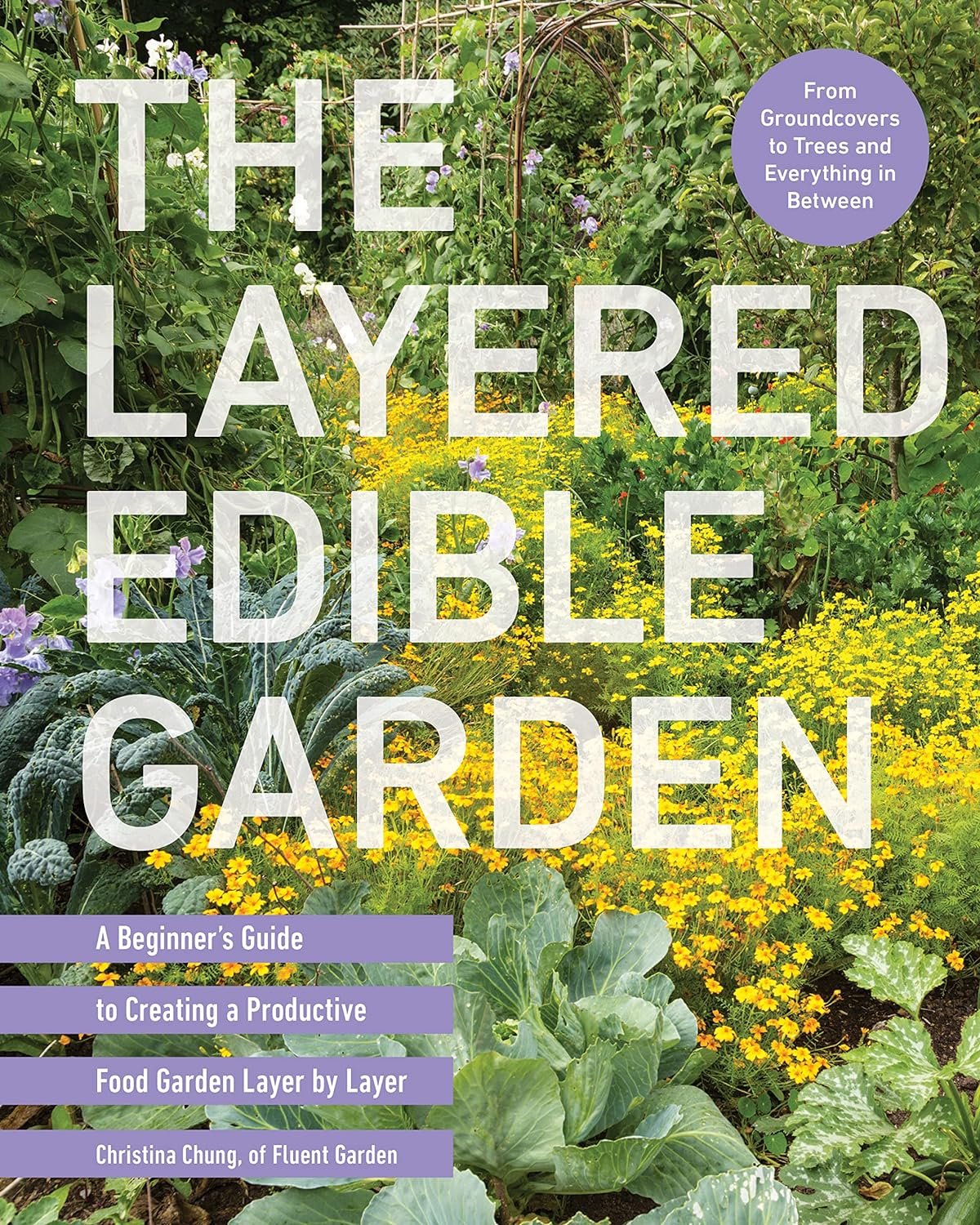“The main concept of this book is to plant up all the layers, all the spaces, of your garden with edible plants to make a different kind of more beautiful, more ecologically sound, less labor-intensive, edible garden,” says Christina Chung, Vancouver-based author of The Layered Edible Garden – A Beginner’s Guide to Creating a Productive Food Garden Layer by Layer.
“As I’ll show you in this book, you can grow a lot of food while still designing a landscape that follows nature’s model. By choosing a diverse range of plant, from all the different layers of nature, that are well suited to your climate and have edible fruit, flowers, roots, or seeds, you can create a version of a natural landscape that will provide you with a lot to eat.”
Chung is a past coordinator of UBC Botanical Garden’s Horticulture Technician Foundation program where she designed and instructed urban food production courses. Through her consultancy, Fluent Garden, the 40-year-old Chung encounters gardeners her own age and younger who are exploring or trying to figure out what style of garden or types of plants work best for their garden space. There are a lot of resources available to gardeners who want to grow tomatoes and potatoes, but what other types of edible foods are possible?
In this book, Chung offers instructions on how to plan a layered garden, prepare a site, and plant. She suggests ways of layering and recommends specific plants to include, some of them unfamiliar to the average vegetable gardener.
All species and hybrids of hostas are edible, for instance. Hosta leaves can be eaten sautéed, boiled, roasted, or breaded in tempura batter and fried. The best time to harvest hosta leaves is when the young, tender shoots start poking out of the ground. Chung recommends harvesting only a few shoots at a time so as to not weaken the plant.
Solomon’s Seal is another common shade perennial that’s edible. The young shoots can be cooked and enjoyed in the same way as asparagus.
Chung recommends growing edibles in large rather than small containers to allow adequate room for root systems to develop. Choose a mix of plants in varied sizes, including climbers and spillers, and arrange them in an eclectic collection of containers in a grouping that enhances the feel of a layered garden.

